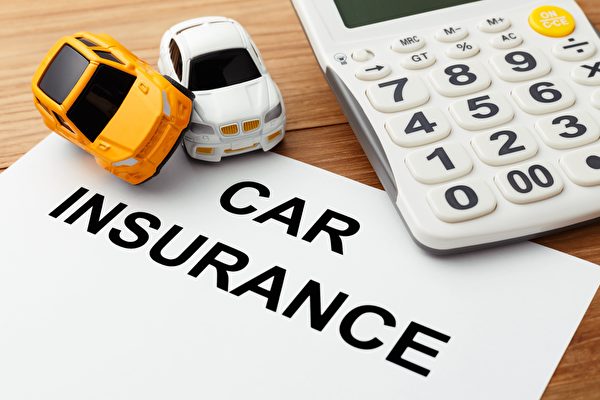The California government’s attempts to legislate a solution to the insurance industry crisis have yet to show tangible effects. On the other hand, many people’s auto insurance rates in California continue to soar.
In the years following the peak of the pandemic, auto insurance rates across the United States have been on the rise. Despite industry experts predicting a slowdown in premium increases in 2024, the situation in California remains a cause for concern. A recent report from the insurance market comparison platform “Insurify” indicates that by the end of 2024, auto insurance premiums in California could increase by more than 50%.
Data shows that as of June 2024, the average annual full coverage auto insurance premium in California was $2,417, a 45% increase from the same period last year’s $1,666. It is projected to further rise to $2,681 by the end of this year, a 54% increase.
Many individuals are already experiencing the impact. Miss Lin in San Gabriel City had an annual auto insurance premium of about $1,000 in 2023, but by 2024, the cumulative price for two policies had reached around $1,600. She stated, “This is because I had no accidents, and my broker found me the cheapest policy.”
Why are California premiums continuously skyrocketing? Analysts from Insurify have identified several factors for this trend.
Insurify analysts point out that insurance companies’ losses are a result of inflationary pressures (such as rising vehicle repair costs and skyrocketing new car prices) and unprecedented climate disasters, and these losses are passed on to consumers.
According to the latest Consumer Price Index (CPI) from the US Bureau of Labor Statistics, vehicle maintenance and repair costs have increased by nearly 38% over the past five years. When insurance companies pay for more expensive claims, policyholders’ premiums naturally increase.
The report from Insurify also highlights that newer vehicles are equipped with advanced driver-assist technologies. “Safety technologies can help drivers avoid accidents and prevent insurance rate hikes, but repair costs are also very expensive,” the report stated.
A recent data from the National Insurance Crime Bureau (NICB) showed that last year, 1,020,729 vehicles were stolen in the United States, with California being the state with the highest number of vehicle thefts, with over 200,000 stolen cars.
Several senior insurance brokers in Los Angeles told reporters that as crime rates increased with more incidents like thefts, break-ins, and catalytic converter thefts, insurance companies have no choice but to raise premiums. Previously, California’s restrictions on premium increases forced some insurance companies to exit the California market.
Insurify analysts pointed out that California’s insurance regulations aimed at protecting consumers can be a double-edged sword.
During the pandemic, consumer protection laws in California froze insurance rate hikes. However, Mallory Mooney, Sales and Service Director at Insurify, mentioned that these temporary restrictions also had adverse effects. “This is why many people saw significant rate increases in 2023 after the restrictions were lifted,” she noted. “Some insurance companies raced to catch up on rates, but for many, it was too late, leading to complete withdrawals from some markets.”
Moreover, the Proposition 103 ratified by California in 1988 required that insurance companies must obtain state approval before implementing new insurance rates, and rates cannot be naturally increased due to inflation or other factors. In other words, insurance companies cannot adjust premiums based on current or future risks.
Since 2023, Californians have been facing a dilemma: insurance companies have been withdrawing from California or limiting the number of new policies. Two prominent companies, “State Farm” and the second-largest insurer in California, “Farmers Insurance,” have successively discontinued their services, causing a chain reaction. People not only struggle to purchase new auto insurance but also find it challenging to buy home insurance.
The state government is making some concessions to break the deadlock caused by insurance companies exiting the California market. However, the director of the California Department of Insurance stated that after rule changes, policy prices may rise even higher.
Governor Newsom signed SB1107 into law at the end of 2022, aiming to double the minimum coverage amounts for auto liability insurance. The new law will take effect on January 1, 2025.
Currently, the minimum liability insurance coverage per vehicle in California is: $15,000 per passenger/$30,000 per accident. However, after the adjustment, the minimum coverage amounts will increase to $30,000 per passenger/$60,000 per accident.
Insurify analysts predict that after the implementation of the new law, California residents will see even higher premiums next year. While higher liability insurance coverage amounts can prevent more drivers from falling into debt after accidents, it also increases the financial burden on insurance companies, which can only be balanced by raising premiums. ◇

